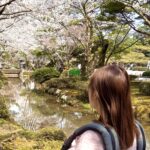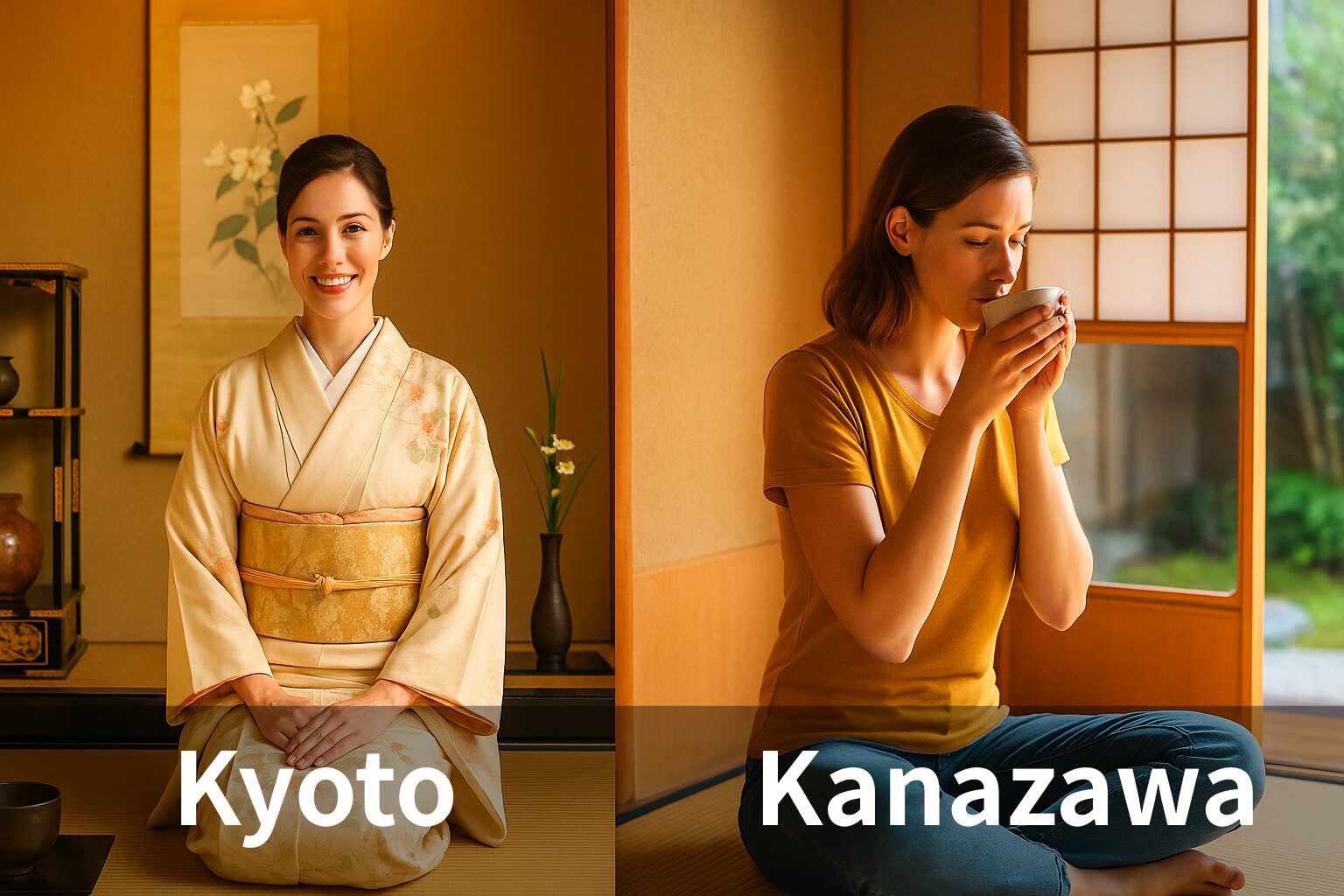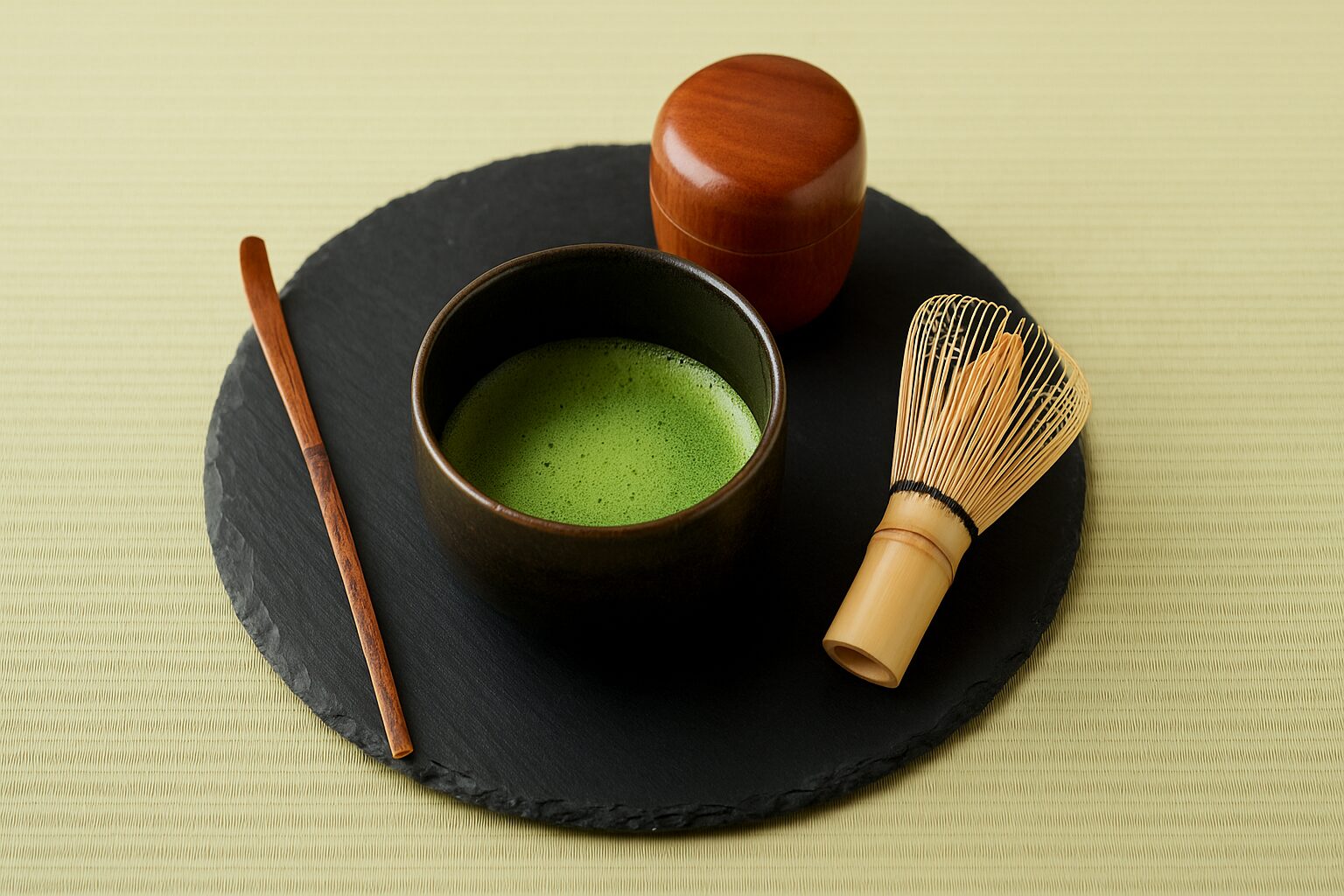The Subtle Beauty of Kanazawa: A City That Celebrates Quiet over Flash
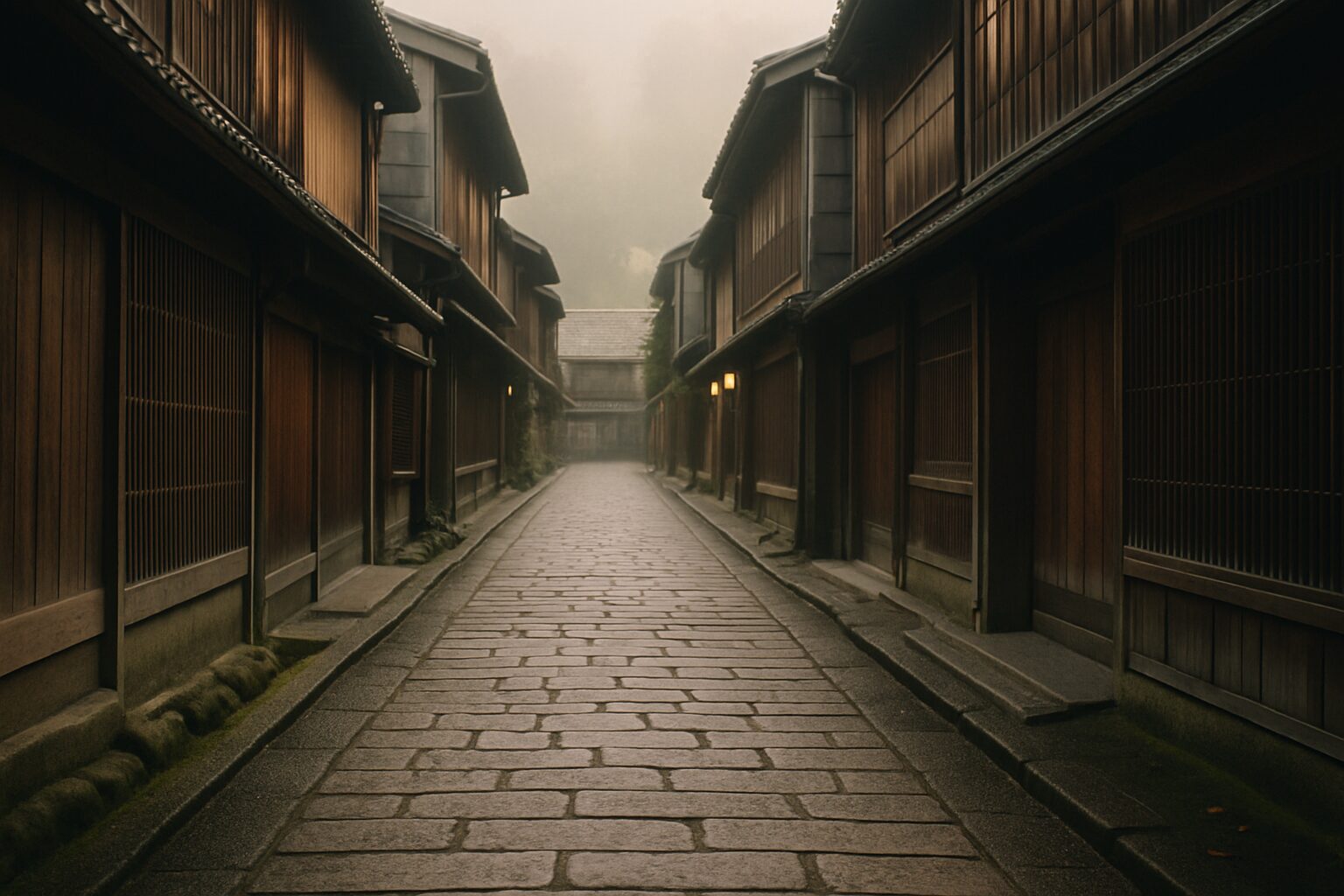
Why Kanazawa’s Understated Charm Feels So Comforting
Quiet Moments That Leave a Lasting Impression
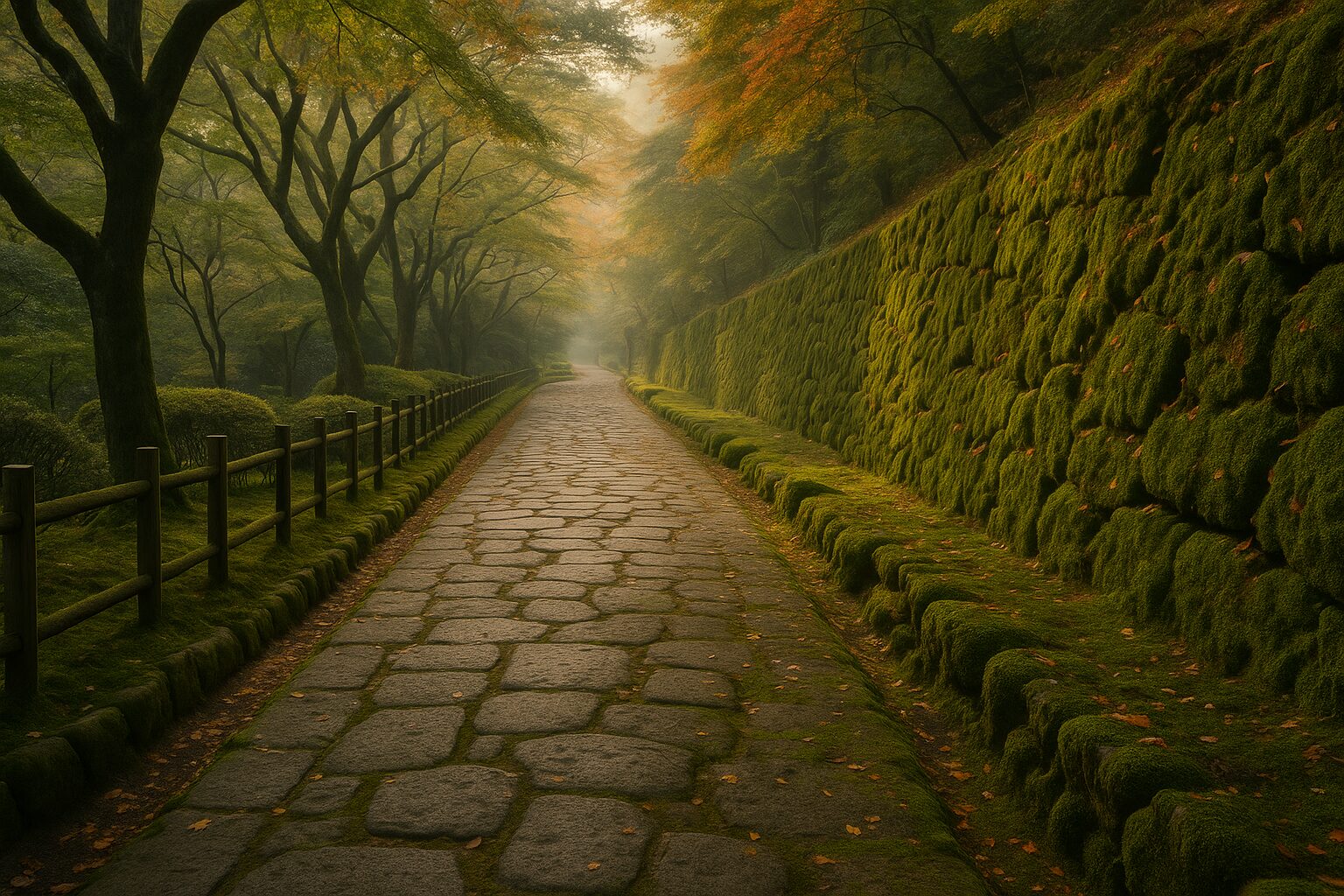
When visiting a new destination, many travelers look forward to breathtaking views or Instagram-worthy landmarks. But walking through Kanazawa offers something different—an invitation to experience the quiet pleasures woven into the rhythm of daily life.
Take, for example, the walk from one museum to another, or the path that connects Kenrokuen Garden to Kanazawa Castle. These aren’t just routes from A to B; they are gentle transitions through space and time, where the natural scenery and seasonal atmosphere become part of the experience. Though it’s a city, Kanazawa feels deeply in tune with nature. Its aesthetic is rooted not in flash, but in flow.
Instead of the soundtrack of bustling shopping malls or loud street vendors, your ears catch the rustling of leaves, the soft babble of a stream, or the low murmur of conversation. Kanazawa has a way of encouraging visitors to lower their voices, slow their steps, and simply be present.
This is not a place where “quiet” equals “boring”—rather, it’s where silence creates a sense of richness. The Kanazawa aesthetic celebrates stillness as a form of depth, offering an experience that’s hard to find in more stimulation-heavy tourist spots.
Discovering the Power of Subtle Beauty
Many travelers who visit Kanazawa find themselves wanting to return—even if they can’t quite explain why. There’s no single “must-see” attraction pulling them back, but rather an intangible allure.
This appeal lies in the city’s understated elegance. The carefully tended roadside plants, the humble charm of old wooden townhouses, and shopfronts that don’t shout for attention all work together to create a space that feels calm and welcoming. It’s the kind of place that quietly opens your senses, encouraging reflection rather than reaction.
A Place Where Visitors Blend In
Another unique trait of Kanazawa is how naturally visitors blend into the rhythm of the city. In contrast to tourist hotspots that often force-feed a sense of “specialness,” Kanazawa gently welcomes you in as part of its calm atmosphere.
Here, you’re not pressured to snap the perfect photo or race from landmark to landmark. You’re allowed to wander, to breathe, and to move at your own pace. This relaxed approach reflects a deeper philosophy: in Kanazawa, tourism is about feeling rather than seeing.
In Summary: A Journey into Stillness
Kanazawa’s magic doesn’t come from loud sounds or vivid colors. Instead, it resides in cobblestone paths that echo your footsteps, in alleyways where voices softly fade away. These everyday scenes hold the essence of a richer travel experience.
To embrace quiet is to embrace a different kind of luxury—one where you meet not just a place, but yourself.
Next time you walk through Kanazawa, try putting away your phone and simply follow your senses. Let the city’s quiet atmosphere guide your journey—this is the heart of the Kanazawa aesthetic.
The Japanese Aesthetic of “Space” and What Kanazawa Reveals
The Unspoken Elegance of Modesty
As you walk through Kanazawa, you may notice how the city feels neither overly curated nor packed. There’s space between buildings, and even popular attractions resist the urge to overfill or overexpose. This sense of intentional emptiness, or yohaku, reflects a deeper aesthetic value.
Take, for example, Gyokusen’inmaru Garden next to Kenrokuen. Its teahouse doesn’t flaunt itself with flashy signage or decorations. Instead, it sits quietly within the garden, blending into the landscape. The staff greet you with calm smiles, and the space offers simple wooden architecture that invites peace. The very absence of spectacle is what soothes the heart.
- What does “Yohaku” mean in Japanese aesthetics?
-
“Yohaku” (余白) literally means “blank space” or “margin.” But in Japanese aesthetics, it’s much more than that—it’s the art of intentional emptiness. Rather than filling every space, beauty is found in what’s left untouched. It invites silence, reflection, and imagination.
- Why is “Yohaku” important in Japanese culture?
-
Yohaku is rooted in Zen philosophy and traditional arts like calligraphy, tea ceremony, and architecture. It reflects a cultural preference for subtlety over excess, and silence over noise. In Yohaku, space isn’t “empty”—it’s full of potential.
- How can I see Yohaku in Kanazawa?
-
Kanazawa, with its samurai heritage and refined crafts, is a living gallery of Yohaku. You can experience it in:
- Kenrokuen Garden: Wide, open spaces between trees and stones evoke quiet contemplation.
- Tea rooms in Nagamachi or Higashi Chaya: Minimalist interiors leave room for mental stillness.
- 21st Century Museum of Contemporary Art: Its use of white space and open design invites interpretation.
- Kaga Yuzen and Kutani ware: Designs often include purposeful space to highlight natural forms.
- Is Yohaku just about minimalism?
-
Not exactly. Yohaku is about balance, not strict minimalism. It’s the deliberate choice to leave something unsaid, to let beauty breathe. A crowded garden can have Yohaku if space is used with care. A simple object can lack Yohaku if it feels forced.
- Can Yohaku be felt in everyday life?
-
Absolutely. In Kanazawa, you might notice the pause between a tea pour, the gap between roof tiles, or the silence in a snowfall. These are not voids—they’re spaces filled with meaning.
Hidden Behind Lattices: The Quiet Beauty of Higashi Chaya District
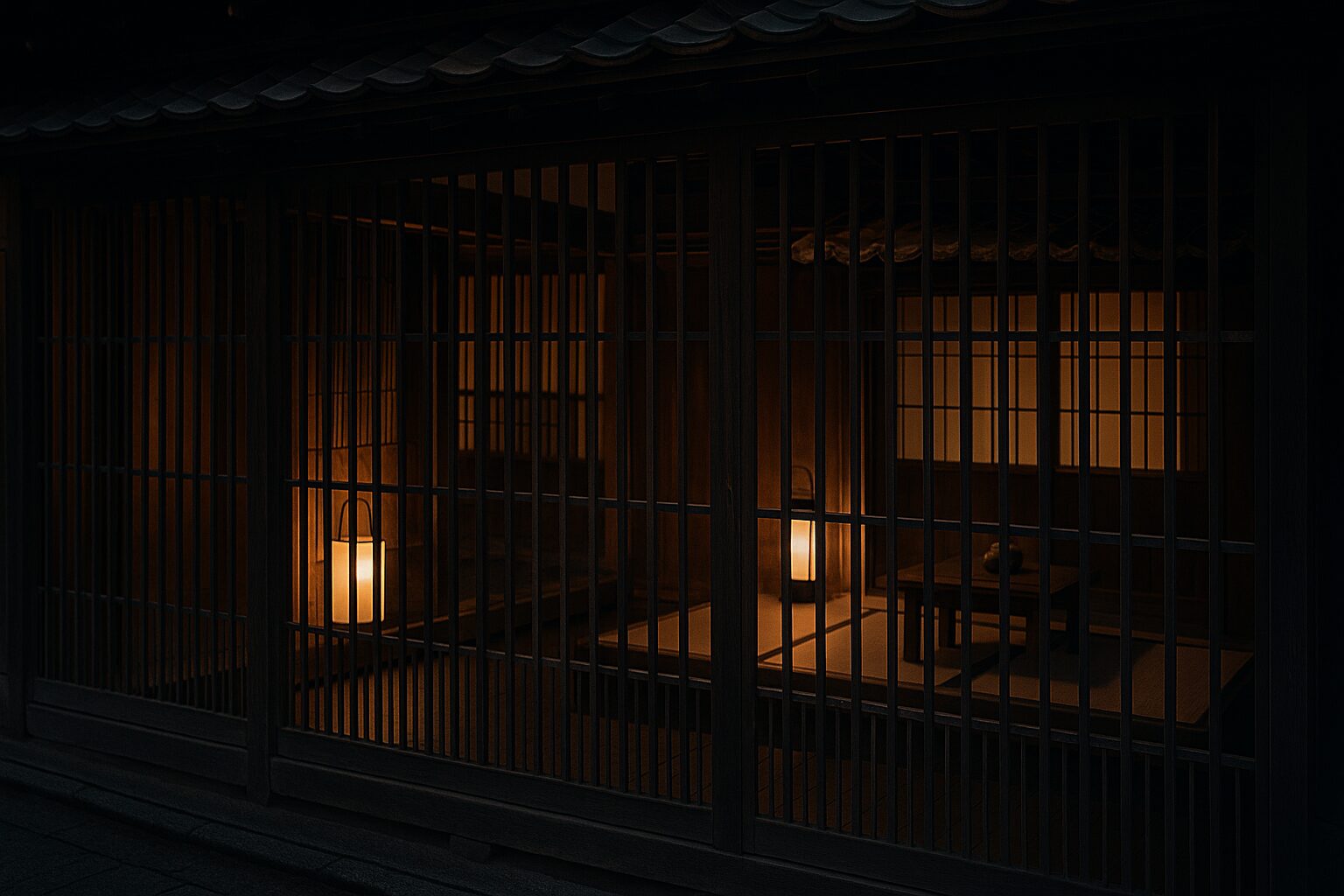
In the Higashi Chaya District, much of Kanazawa’s cultural richness lies behind wooden lattices. The area doesn’t bombard visitors with signs or audio guides, and its streets can even feel a bit reserved. Yet behind that subtle veil is a world deeply connected to the philosophy of tea—a world where atmosphere, not explanation, reigns.
Here, you sense Kanazawa’s refined approach to hospitality: no aggressive sales pitches or overexplained exhibits. Instead, the space gently invites those who are curious, without demanding attention. You can feel the presence of tradition without needing everything spelled out.
Quiet Designs That Reflect “Wabi-Sabi”
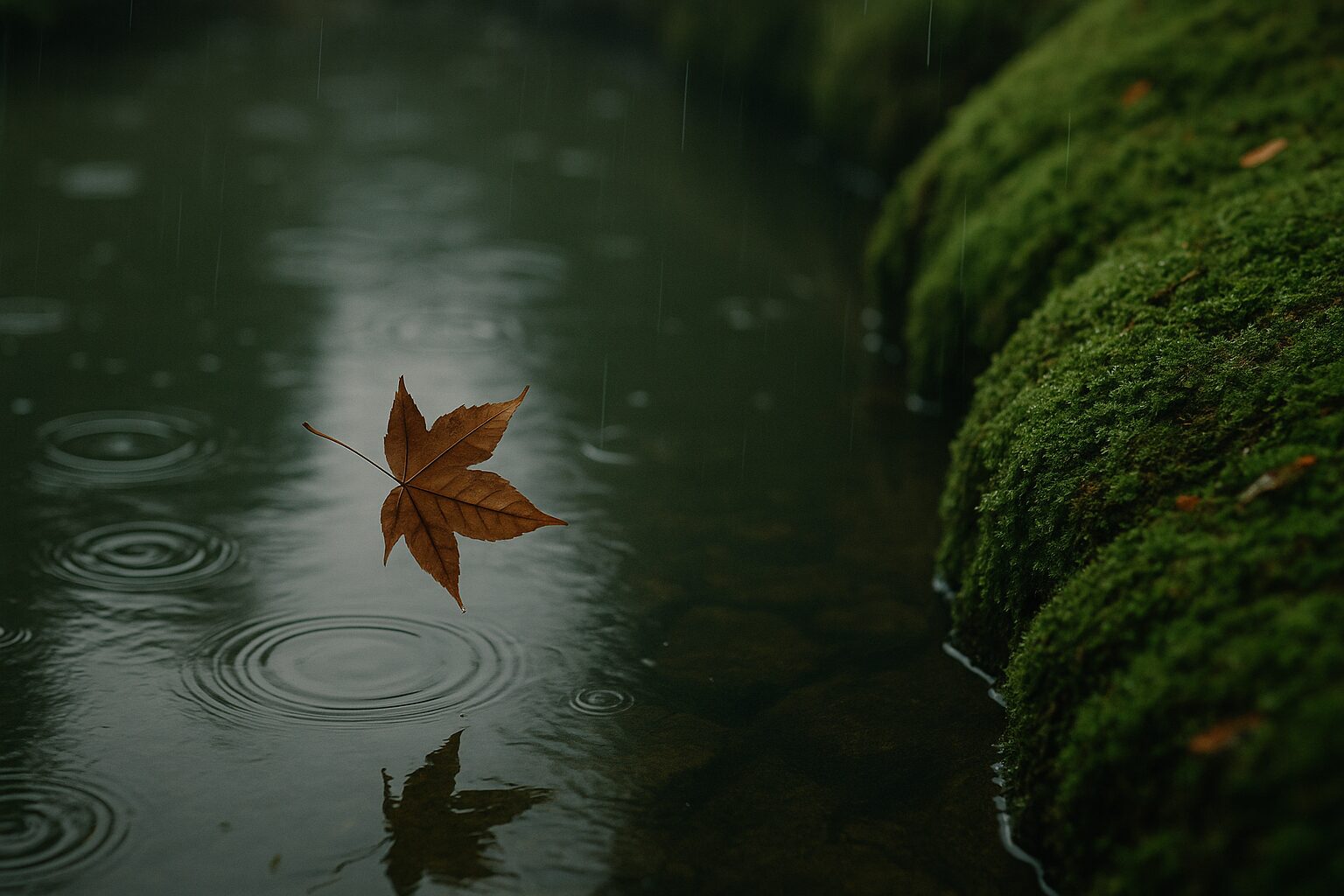
Whether it’s a single leaf falling into a pond at Gyokusen’inmaru or gentle rain settling on the moss of Kenrokuen, Kanazawa is filled with quiet scenes that resonate with wabi-sabi—the beauty of imperfection and impermanence.
Rather than glamor or spectacle, the city celebrates stillness, transience, and the passing of time. It’s a way of seeing the world that prizes depth over dazzle, embodying the Kanazawa aesthetic.
In Summary: The Luxury of Leaving Space
In Kanazawa, you’ll find a deliberate choice to leave things unfinished, unspoken, and unseen. A garden left partially empty. A shop that doesn’t display everything. A guide who says just enough and no more.
This room to breathe is precisely what allows travelers to project their own feelings and imagination.
By offering less, Kanazawa gives more.
The Urban Philosophy of Silence and Space in Kanazawa
A City That Speaks Through Space: Experiencing the D.T. Suzuki Museum
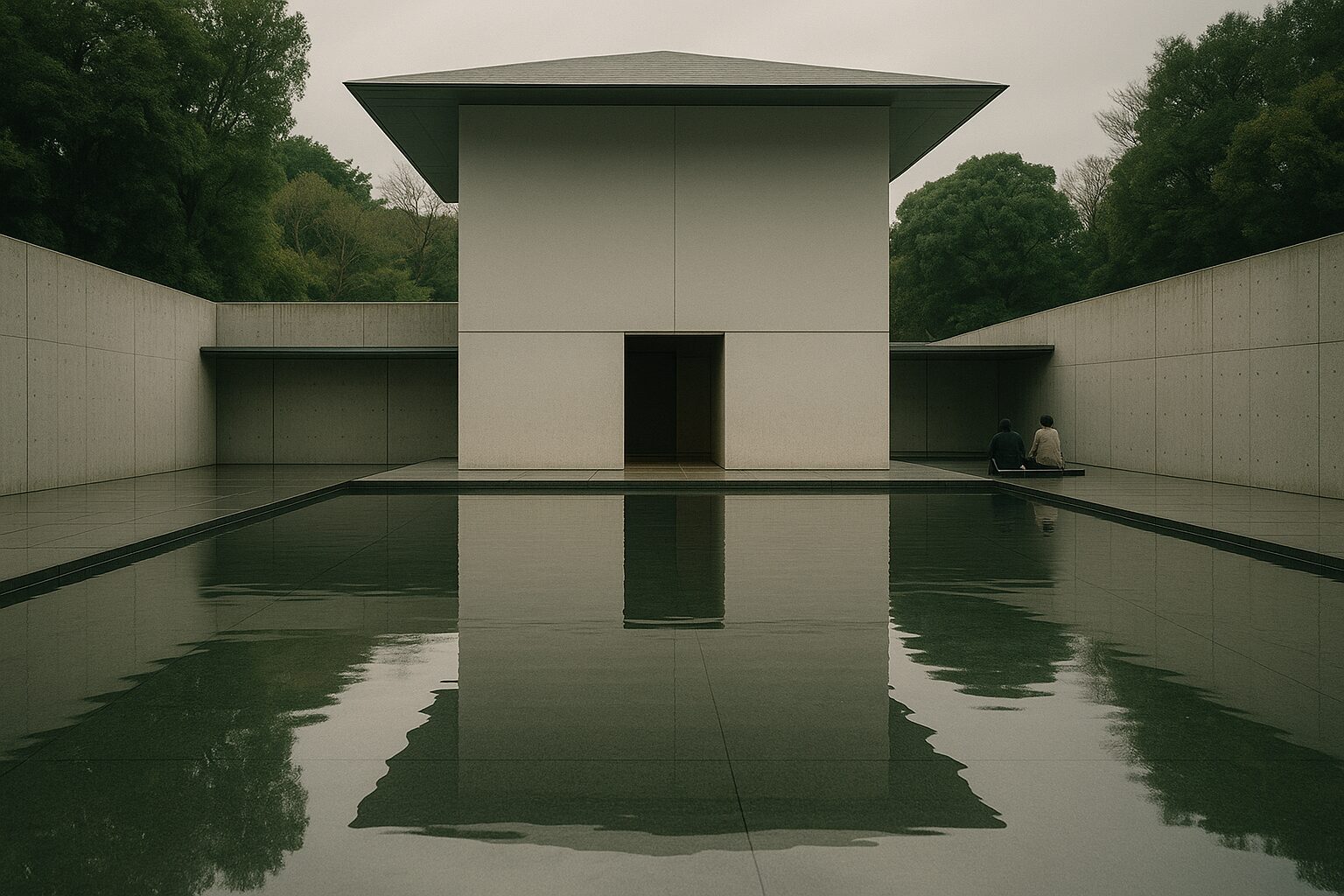
Kanazawa’s appreciation for silence and space isn’t just a mood—it’s a foundational design principle, reflected in places like the D.T. Suzuki Museum.
Rather than directing visitors with words or exhibits, the museum uses silence to open hearts and minds. You’re met with a tranquil water mirror garden, soft reflections, and the sound of wind—all elements that quietly guide you into contemplation.
Architecture That Invites Reflection
The architecture of the D.T. Suzuki Museum is designed to create mental space. There are no overly detailed explanations or interactive screens. Instead, the structure itself—bare concrete, matte wood, serene water views—encourages quiet thought and inward reflection.
These elements work together to build a space where silence is not just accepted but celebrated.
A City Designed to Prompt Thought
What makes Kanazawa so special is that this sense of ma—the space between things—is not limited to specific venues. It permeates the city itself.
Even near tourist attractions, you can slip into a side street and feel time slow down. You may find yourself pausing on a bench just to watch the sky. These are not accidental moments—they are carefully crafted opportunities for reflection, embedded in the city’s design.
In Summary: Silence as a Design Choice
In many cities, space is filled with noise, signs, and function. But Kanazawa stands apart with its intentional silence and spaciousness. It’s a city that resists overcrowding—in both its physical layout and emotional pace.
This design philosophy creates a space where visitors can slow down, reflect, and engage with their journey on a deeper level.
Everyday Beauty Outside the Tourist Map
Ordinary Scenes That Stir the Heart
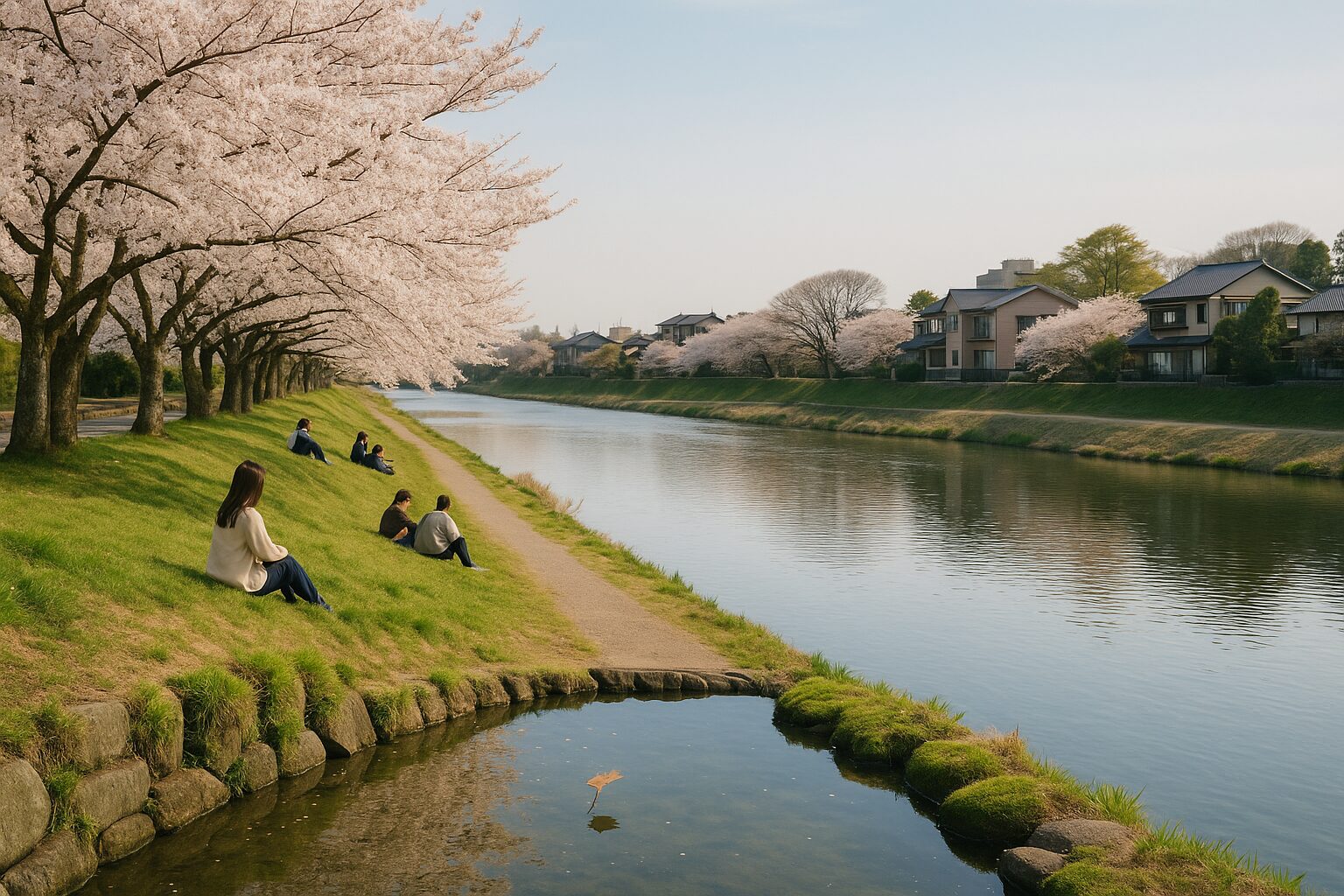
Traveling through Kanazawa, you’ll often stumble upon scenes that aren’t in any guidebook but still move you. One such place is along the banks of the Saigawa River.
It’s not a major tourist destination, but the flowing river, rows of cherry trees, and people sitting casually on the grass paint a picture of peaceful everyday life. And it’s this ordinariness that reveals the deeper beauty of Kanazawa.
A Harmony Between Life and Landscape
As you walk along the Saigawa, you’ll see people jogging, walking dogs, or reading by the river. Each of them blends naturally into the landscape. You don’t feel like a visitor watching a show—you feel part of the scenery.
There’s no manufactured excitement here. Just a sense that you belong.
A Different Kind of Travel Experience
In today’s world of “photo-worthy” tourism, it’s easy to get caught up in the pursuit of the perfect shot. But places like the Saigawa River offer something else—freedom from that pressure.
Moments like watching cherry blossoms drift in the wind, or simply listening to the water while you think—these don’t translate well to social media, but they linger in the heart long after your trip.
Living Like a Local, Traveling Like a Resident
The quiet beauty along the Saigawa reflects a broader truth about Kanazawa: travel here feels less like sightseeing and more like slipping into someone else’s everyday rhythm.
In a place you’ve never been, you suddenly feel at home. That sense of comfort is the quiet miracle of the Kanazawa aesthetic.
In Summary: Finding Kanazawa’s Spirit Outside the Guidebooks
While Kanazawa has many famous attractions, its deeper charm lies in the everyday scenes—the spaces between the destinations.
In Kanazawa, travel isn’t about chasing highlights. It’s about honoring the places that move your heart, even if they’re not on a map.
The Future of “Quiet Beauty” in Kanazawa
The Most Memorable Moments Aren’t in Your Camera Roll
One thing visitors often say after a trip to Kanazawa is, “I couldn’t capture it on my phone—but I’ll never forget it.”
It’s not just the scenery. It’s the atmosphere, the way people walk, the unexpected stillness you feel in a moment. These subtle sensations form the lasting memories of a Kanazawa journey.
Going Against the Trend—And Finding New Value
In today’s tourism culture, flashy visuals and sharable photos often dominate. But Kanazawa quietly resists that trend.
Here, value is found in everyday spaces and quiet moments, not staged events or bold displays. It’s a reminder that understated beauty is not only timeless—but increasingly relevant.
A Place Where Tourists and Locals Share the Same Pace
Another rare quality of Kanazawa is how it blurs the line between tourist and local. You walk the same streets, breathe the same air, and settle into the same calm rhythm.
This sense of shared space makes the city feel welcoming to all, without putting anyone on display.
A New Era of Travel: One You Feel

Looking ahead, the most meaningful journeys may not be the ones that look good on camera—but the ones you truly feel.
For thoughtful travelers, the quiet impact of Kanazawa—its cultural textures, its subtle beauty—offers a lasting kind of fulfillment. In this sense, the Kanazawa aesthetic may be the perfect guide for a new kind of journey: one defined by feeling, not just seeing.
In Summary: A City That Leaves a Mark on the Heart
Kanazawa’s tradition of modest beauty and spacious design could well become a new standard for meaningful travel.
Instead of just looking, you feel. Instead of constant narration, you experience silence. For those drawn to this kind of journey, Kanazawa is a place you’ll want to return to—again and again.
